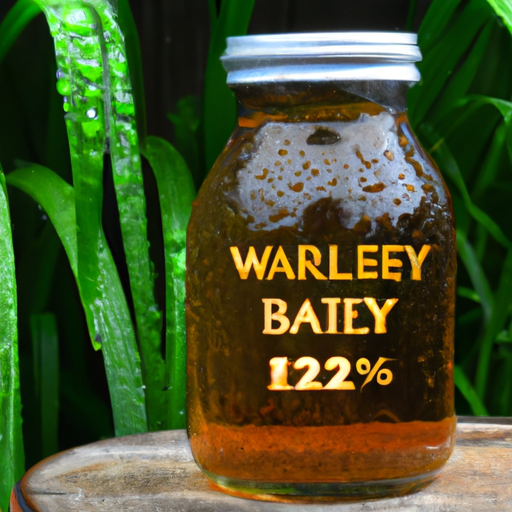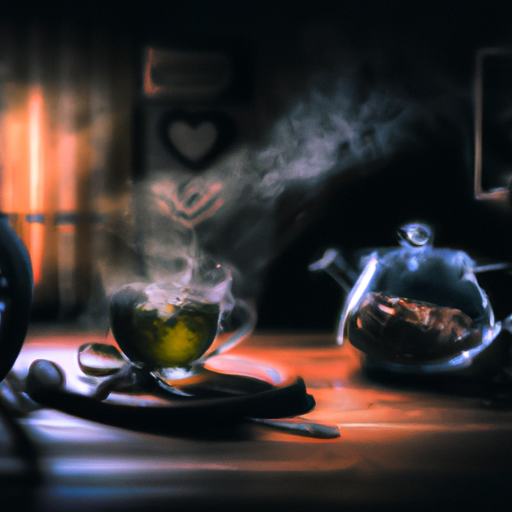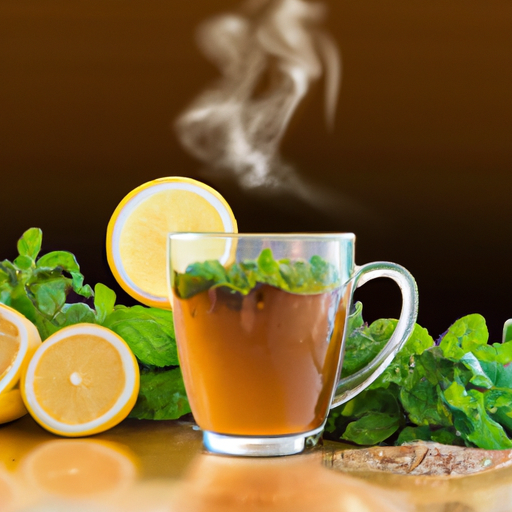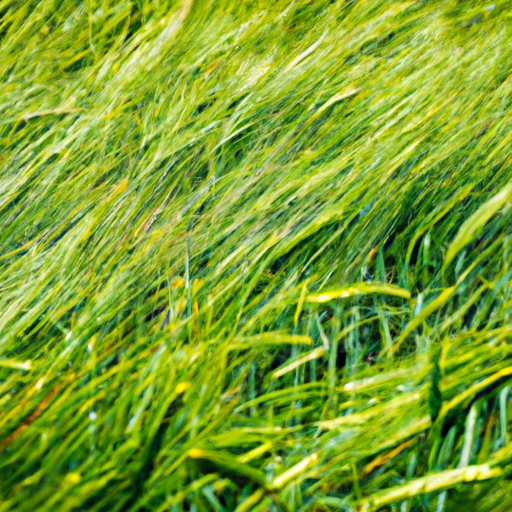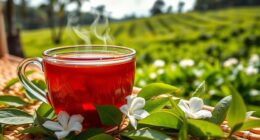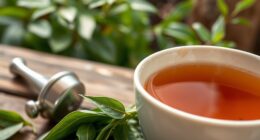As an aficionado of barley tea, I’ve frequently pondered the lifespan of this beverage before it spoils. Known also as roasted barley tea or mugicha, this drink enjoys widespread popularity across various Asian nations. It’s crafted from roasted barley grains, offering a flavor that’s uniquely nutty with a hint of sweetness.
The shelf life of barley tea can vary depending on several factors, including the quality of the tea, how it is stored, and whether it is homemade or store-bought.
In this article, I will explore the different factors that affect the shelf life of barley tea, how to store it properly, signs of spoilage to look out for, and how to extend its shelf life.
I will also provide tips on how to reheat barley tea and share some alternative uses for this versatile beverage.
Key Takeaways
- Barley tea has a shelf life that varies depending on quality, storage, and whether homemade or store-bought, typically lasting about six months before losing flavor and potency.
- Proper storage techniques, such as storing in a cool, dry place away from direct sunlight and heat sources in glass jars or plastic containers with tight-fitting lids, are crucial for maintaining freshness.
- Sediment at the bottom of the container is normal, but excessive amounts may indicate spoilage, which can have a sour/off-putting smell or taste.
- To extend the shelf life of barley tea, natural preservatives like lemon juice or honey can be added, or smaller batches can be made more frequently, and reheating can be done using a microwave or stovetop.
What is Barley Tea?
Barley tea, also known as mugicha, is a refreshing and caffeine-free summer beverage that has been enjoyed for centuries in many cultures. This tea is made from roasted barley grains, and it has a nutty flavor that is both mild and soothing.
One of the best things about barley tea is that it has many health benefits. It’s high in antioxidants, which can help to reduce inflammation in the body. Additionally, it contains vitamins and minerals that are essential for good health.
If you want to make barley tea at home, it’s very easy to do so. All you need to do is roast some barley grains in a pan until they’re lightly browned and fragrant. Then, you can simmer the grains in water for about 20 minutes, or until the water turns a light brown color. Once the tea is ready, you can strain it and serve it hot or cold, depending on your preference.
When it comes to the shelf life of barley tea, there are many factors that can affect it. For example, if the tea is stored in a cool, dry place, it can last for several months. However, if it’s exposed to heat or humidity, it can spoil more quickly. Additionally, the quality of the tea can also affect its shelf life. If the tea is made from high-quality barley grains and is brewed properly, it’ll last longer than tea that’s made from lower-quality ingredients.
Overall, it’s important to store barley tea properly and to use it within a reasonable amount of time to ensure that it stays fresh and flavorful.
Factors Affecting Shelf Life
Factors like storage conditions and packaging material can impact the freshness of barley tea, just like any other food or beverage. The shelf life of barley tea depends on various factors such as temperature, humidity, exposure to light, and the type of packaging used.
Generally, unopened packages of barley tea can last up to a year if stored in a cool, dry, and dark place. However, once opened, the freshness of the tea deteriorates quickly. To ensure that your barley tea stays fresh for a longer time, it’s important to store it properly.
One of the most important factors affecting freshness is the temperature at which it’s stored. Barley tea should be stored at a cool and dry place, away from direct sunlight and heat sources. Exposure to light and heat can cause the tea to oxidize, which can affect its aroma and flavor. Additionally, storing the tea in an airtight container can help prevent moisture and air from getting inside and causing it to spoil.
Proper storage techniques are crucial for maintaining the freshness of barley tea. Storing it in a cool, dry, and dark place, away from direct sunlight and heat sources, and in an airtight container can help extend its shelf life.
In the next section, we’ll discuss how long you can keep barley tea before it goes bad and how to tell if it has gone bad.
How to Store Barley Tea
To maintain the freshness of your barley tea, proper storage is crucial. The best way to store it is to keep it in an airtight container, away from direct sunlight and heat sources. This will prevent oxidation and moisture from affecting the quality of your brew.
The ideal containers for storing barley tea are glass jars or plastic containers with tight-fitting lids. It’s best to avoid storing it in metal containers, as they can affect the taste and quality of the tea. Additionally, make sure to label the container with the date of brewing, so you can keep track of how long it has been stored.
Proper storage can help extend the shelf life of your barley tea, but it’s still important to keep an eye out for signs of spoilage. In the next section, we’ll discuss some of the common signs to look for when your tea has gone bad.
Signs of Spoilage
As someone who enjoys drinking barley tea, it’s important to know the signs of spoilage to avoid any unpleasant experiences.
The appearance of spoiled barley tea can be cloudy or have mold growing on the surface.
Spoiled barley tea may also have a sour or off-putting smell, indicating bacterial growth.
Finally, if the taste is sour or bitter, it’s a sure sign that the barley tea has gone bad and should be thrown out.
Appearance
The refreshing barley tea can be kept for a few days without losing its delicious taste and aroma. However, it’s important to keep an eye on its appearance to ensure its freshness.
Here are some things to look out for:
-
Cloudiness: If the tea appears cloudy or murky, it may be a sign of bacterial growth or mold. It’s best to discard the tea if this is the case.
-
Sediment: It’s normal for some sediment to settle at the bottom of the container, but if there’s an excessive amount, it may indicate spoilage.
-
Color: The tea should have a light golden-brown color. If it appears darker or has a greenish tint, it may have gone bad.
Keeping an eye on these visual cues can help you determine if your barley tea is still safe to consume.
In the next section, we’ll discuss the importance of paying attention to the smell of the tea.
Smell
Take a deep whiff of the fragrant aroma emanating from your cup and savor the delicious scent of your refreshing brew. Barley tea has a unique nutty and roasted aroma that isn’t only delightful to the senses but also offers several health benefits.
Studies have shown that barley tea contains antioxidants and anti-inflammatory properties that can help lower the risk of heart disease, diabetes, and certain types of cancer. In addition to its health benefits, barley tea is deeply rooted in Korean and Japanese culture. It is commonly served as a refreshing summer beverage and often enjoyed during meals or as a way to cool down on a hot day.
As you take your first sip, the aroma of the barley tea will tantalize your taste buds. It prepares them for the rich and earthy taste that lies ahead.
Taste
When you sip this warm beverage, your taste buds will dance with delight as the rich and earthy flavors envelop your palate. Barley tea has a unique nutty taste that’s both refreshing and satisfying. If you want to add a little sweetness, you can always add honey or sugar. Lemon or ginger can also be added for a zesty kick.
For those who want to try different variations of barley tea, there are lots of tips and tricks to make your drink even more delicious. You can experiment with different types of barley, such as roasted barley or barley flakes. You can also try adding different herbs like mint or rosemary to your tea. The possibilities are endless!
But before you start exploring, it’s important to know the shelf life of barley tea.
Shelf Life of Barley Tea
Barley tea typically lasts for about six months before it starts to lose its flavor and potency. To maximize its shelf life and ensure the best possible taste, there are a few ways you can preserve barley tea.
First, store it in an airtight container in a cool, dry place away from direct sunlight. This will help prevent exposure to moisture and light, which can cause the tea to spoil faster.
Second, consider using a vacuum sealer to remove any excess air from the container, as this can also help extend its shelf life. Finally, you can freeze barley tea to keep it fresh for up to a year.
Drinking barley tea has many benefits, including its ability to lower blood sugar levels, improve digestion, and boost hydration. However, to enjoy these benefits, it’s important to ensure that the tea is fresh and potent.
When stored properly, barley tea can maintain its flavor and health benefits for up to six months. Additionally, by following the tips above, you can extend its shelf life even further and enjoy the tea’s benefits for longer.
To extend the shelf life of barley tea even further, there are a few additional steps you can take. One option is to add a natural preservative such as lemon juice or honey to the tea before storing it. This can help prevent spoilage and maintain freshness.
Another option is to make smaller batches of tea more frequently, rather than storing large quantities for long periods of time. By following these tips, you can ensure that your barley tea stays fresh, potent, and delicious for as long as possible.
How to Extend Shelf Life
By adding a natural preservative such as lemon juice or honey, you can enhance the longevity of your brew, while also infusing it with a sweet and tangy flavor. Lemon juice contains citric acid, which inhibits the growth of bacteria and molds. Honey, on the other hand, is acidic and contains hydrogen peroxide, which has antibacterial properties.
Another way to make barley tea last longer is by storing it properly. After brewing, strain the tea and pour it into an airtight container. Keep it in the fridge to slow down the growth of bacteria and molds. If you want to reuse the tea leaves, you can dry them out and use them as a natural air freshener. Simply place them in a sachet and hang it in your closet or drawers.
Now that you know how to extend the shelf life of your barley tea, let’s move on to the next step: reheating it. While you can certainly drink barley tea cold, some people prefer it warm. To reheat, simply pour the desired amount into a pot and warm it up on the stove. Avoid microwaving as it can alter the taste and texture of the tea.
How to Reheat Barley Tea
I usually store a pitcher of barley tea in the fridge during the summer months. When I want to reheat it, there are two ways I prefer to do it.
The first is using the microwave, which is quick and easy.
The second is using the stovetop, which takes a little longer but allows for more control over the temperature.
Microwave
Microwaving barley tea is a quick and convenient way to enjoy a hot cup without waiting for the traditional brewing process. Here are some tips for microwaving barley tea safely:
-
Use a microwave-safe container: Make sure the container you use is labeled as microwave-safe to avoid any potential hazards.
-
Add water: Before microwaving, add water to the container and then add the barley tea bag. This will prevent the tea from becoming too concentrated and bitter.
-
Microwave in short intervals: Heat the tea in 30-second intervals to prevent it from boiling over. Stir the tea after each interval until it reaches your desired temperature.
-
Let it cool: After microwaving, let the tea cool for a few minutes before drinking to prevent any burns.
If you prefer an alternative brewing method, stovetop brewing is another option. Simply boil water in a pot, add the barley tea bag, and let it steep for a few minutes before removing the bag and enjoying your hot cup of barley tea.
Stovetop
I hope everyone enjoyed learning about how to make barley tea in the microwave. However, if you prefer a more traditional method, you can also make barley tea on the stovetop.
To do this, simply add barley and water to a pot and bring it to a boil. Once it reaches boiling point, reduce the heat and let it simmer for about 15-20 minutes. During this time, the barley will release its flavor and nutrients into the water, resulting in a delicious and refreshing tea.
One of the advantages of making barley tea on the stovetop is that you can control the boiling time and adjust the flavor to your liking. For example, if you prefer a stronger flavor, you can let it simmer for a longer period. On the other hand, if you want a milder taste, you can reduce the boiling time. You can also experiment with different types of barley, such as roasted or hulled, to create different flavor variations.
Now that we’ve covered how to make barley tea on the stovetop, let’s move on to other uses for barley tea.
Other Uses for Barley Tea
You can enjoy the unique flavor of barley tea in various ways, such as using it as a base for cocktails or adding it to marinades for a savory twist. Here are three ways to incorporate barley tea into your cooking routine:
-
Use barley tea to make a refreshing iced tea. Simply brew a strong batch of barley tea, let it cool, and serve over ice with a slice of lemon or lime.
-
Infuse barley tea into soups or stews for an added depth of flavor. Just add a few tea bags or loose leaves to the pot and let them steep alongside the other ingredients.
-
Use barley tea as a marinade for meats, tofu, or vegetables. The nutty, slightly sweet flavor of the tea pairs well with soy sauce, garlic, and ginger. Pro tip: reserve some of the marinade to use as a sauce or glaze after cooking.
Now that you know a few alternative uses for barley tea, let’s move onto some specific recipes that showcase this versatile ingredient.
Barley Tea Recipes
Now that we’ve explored the various uses for barley tea, let’s move on to something more exciting: barley tea recipes! I must admit, I’m a huge fan of experimenting with different brewing techniques and ingredients to come up with the perfect cup of barley tea. Here, I’ll be sharing some of my favorite recipes, so grab a pen and paper and let’s get started!
First up, we have the classic Japanese barley tea, also known as mugicha. This recipe is simple yet delicious, and perfect for a hot summer day. To make it, all you need is roasted barley grains and water. Simply add a handful of the grains to a pot of water and bring it to a boil. Let it simmer for a few minutes, then strain out the grains and let the tea cool. Serve over ice and enjoy!
Another great recipe is the Korean barley tea, or boricha. This version is a bit more complex, but the end result is well worth it. To make it, you’ll need roasted barley grains, water, and a few other ingredients such as cinnamon and ginger. Boil the barley grains and water together for about 30 minutes, then add the cinnamon and ginger and let it simmer for another 10 minutes. Strain out the grains and spices, and let the tea cool. Serve hot or cold, depending on your preference.
Lastly, we have a more unique recipe that incorporates other flavors and ingredients. This one is perfect for those who like to experiment with their tea. For this recipe, you’ll need roasted barley grains, water, honey, and lemon juice. Boil the barley grains and water together, then add honey and lemon juice to taste. Let it simmer for a few minutes, then strain out the grains and let the tea cool. Serve over ice and enjoy the refreshing, sweet and tangy taste!
Table of Barley Tea Recipes:
| Recipe | Ingredients | |||
|---|---|---|---|---|
| Classic Japanese Barley Tea | Roasted Barley Grains, Water | |||
| Korean Barley Tea | Roasted Barley Grains, Water, Cinnamon, Ginger | |||
| Unique Barley Tea | Roasted Barley Grains, Water, Honey, Lemon Juice | Barley Milk Tea | Roasted Barley Grains, Water, Milk, Sugar |
Frequently Asked Questions
Is it safe to drink barley tea after its expiration date?
Oh my goodness, I can’t stress enough the potential health risks of drinking expired barley tea! It’s important to always check the expiration date before consuming any food or beverage, including tea.
Consuming expired barley tea can lead to food poisoning, which can cause symptoms such as nausea, vomiting, and diarrhea. It’s best to avoid drinking expired barley tea altogether to prevent any potential health risks.
However, if you find yourself with expired barley tea, there are alternative uses for it such as using it as a natural fertilizer for plants or as a skin treatment for its anti-inflammatory properties. But again, please do not drink it past its expiration date!
Can barley tea be frozen for long-term storage?
Yes, barley tea can be frozen for long-term storage. When properly stored, frozen barley tea can last up to 6 months. To freeze barley tea, simply pour it into a container with a tight-fitting lid and leave about an inch of space at the top to allow for expansion.
Label the container with the date and freeze it. When you’re ready to drink the tea, thaw it in the refrigerator overnight and then heat it up on the stove or in the microwave. However, it’s important to note that freezing can alter the taste and quality of the tea, so it’s recommended to consume it within 6 months for the best flavor.
Can you brew barley tea using a tea bag?
I’ve heard some people say that brewing barley tea using a tea bag is not possible, but I can confirm that it is indeed possible. The brewing method is quite simple, just like brewing any other tea.
Boil water, pour it over the tea bag, and let it steep for a few minutes. The resulting flavor profile is slightly nutty and earthy, with a hint of sweetness. However, if you prefer a stronger flavor, you can use more tea bags or let it steep for a longer period of time.
Overall, brewing barley tea using a tea bag is a convenient and easy way to enjoy this delicious and healthy beverage.
Does the type of barley used affect the shelf life of the tea?
When it comes to the shelf life of barley tea, the type of barley used can indeed play a role. Barley tea varieties can differ in their flavor, aroma, and antioxidant content, but they may also have varying levels of mold or mycotoxins that can affect the tea’s longevity.
Barley tea brewing methods can also impact the shelf life, as leaving the tea to steep for too long or keeping it at room temperature for extended periods can promote bacterial growth and spoilage. It’s best to store barley tea in the refrigerator and consume it within a few days to ensure freshness and quality.
Is it possible to make barley tea using roasted barley flour?
I’ve experimented with making barley tea using roasted barley flour as an alternative to whole grain barley. While it’s possible to make tea using roasted barley flour, the flavor and nutritional benefits aren’t as strong as using whole grain barley.
Whole grain barley contains more fiber, vitamins, and minerals than flour, which can help support digestive health and lower cholesterol levels. Additionally, the roasted flavor of the flour can be overpowering and may not be as enjoyable as the nutty, earthy flavor of whole grain barley.
Overall, while roasted barley flour alternatives may work in a pinch, I highly recommend using whole grain barley for the best taste and health benefits.
Conclusion
All in all, I’ve learned that barley tea is a delicious and healthy beverage that can last for quite some time if stored properly. While there are many factors that can affect its shelf life, such as moisture, temperature, and exposure to light, there are also ways to extend it and prevent spoilage.
By keeping it in an airtight container, in a cool and dry place, and away from direct sunlight, you can enjoy your barley tea for up to a year or even longer. In addition to being a refreshing drink, barley tea has many other uses, such as a base for soups, a marinade for meat, or even a natural hair rinse.
With so many benefits and possibilities, it’s no wonder that barley tea is a staple in many cultures around the world. So, next time you brew a pot of barley tea, remember to savor every sip and appreciate the many ways it can enhance your life.

